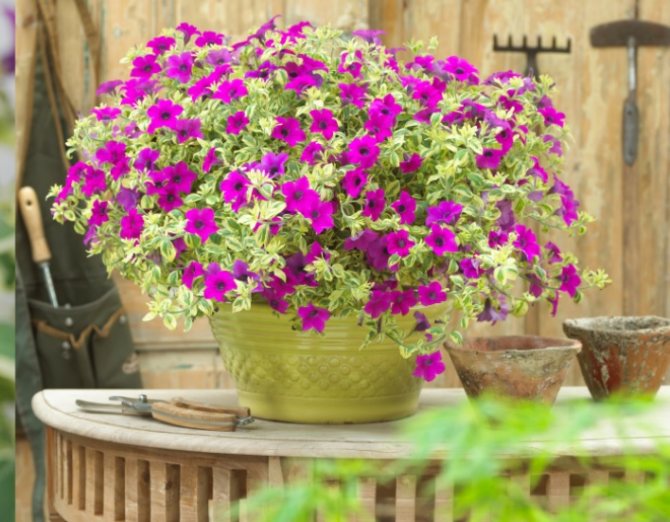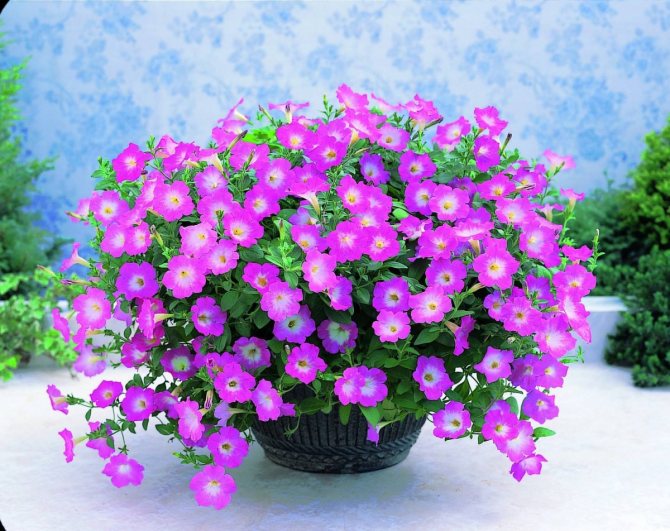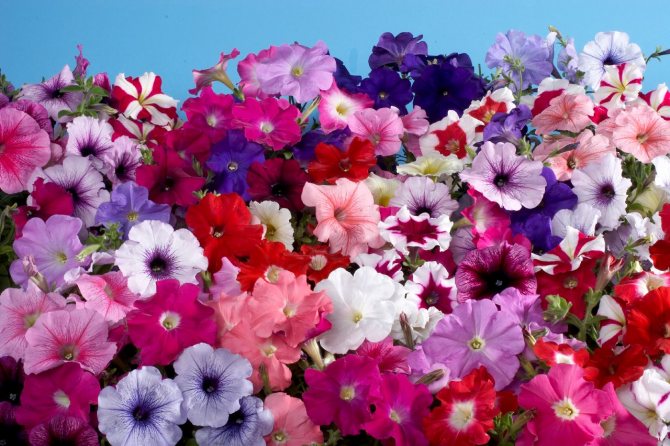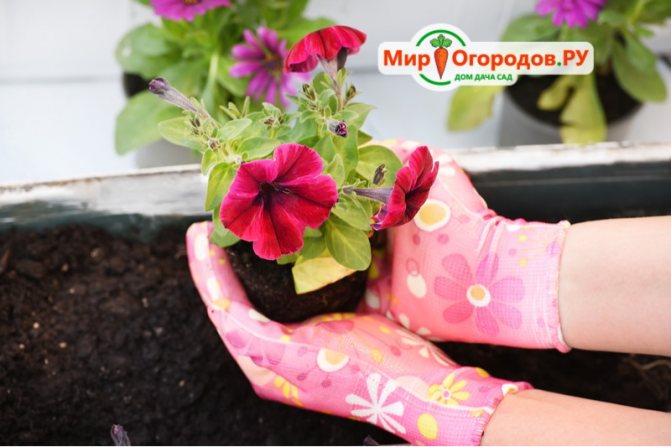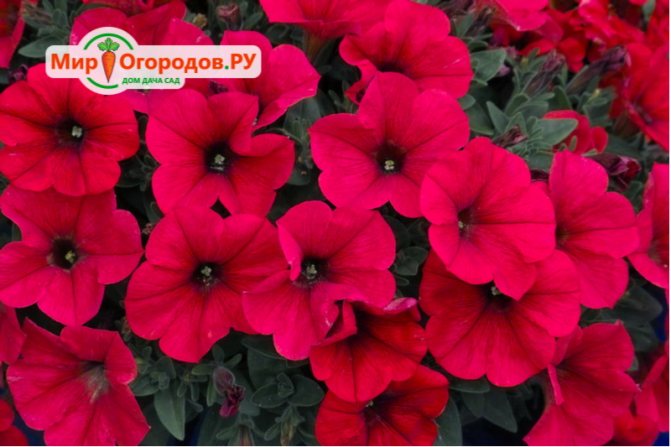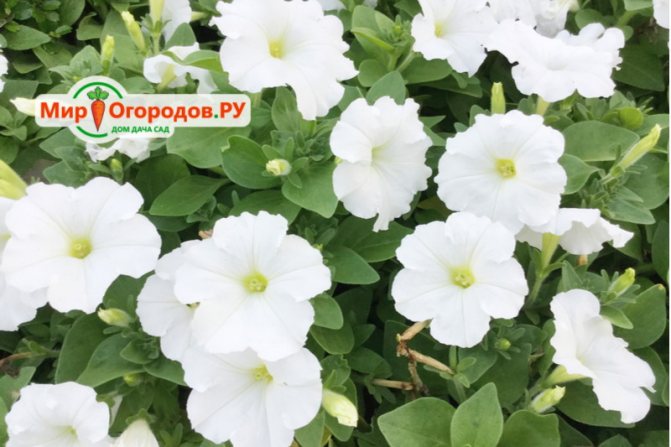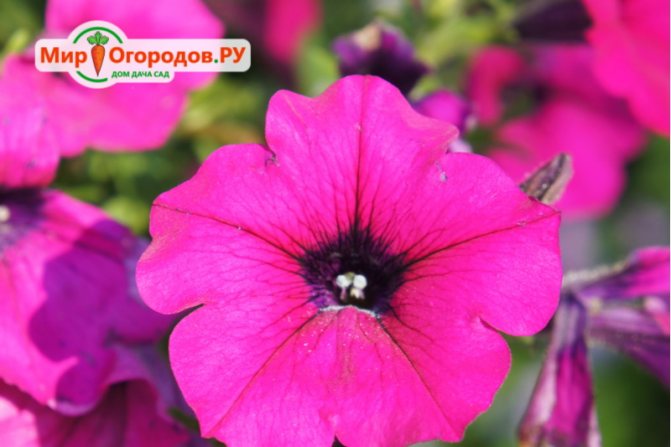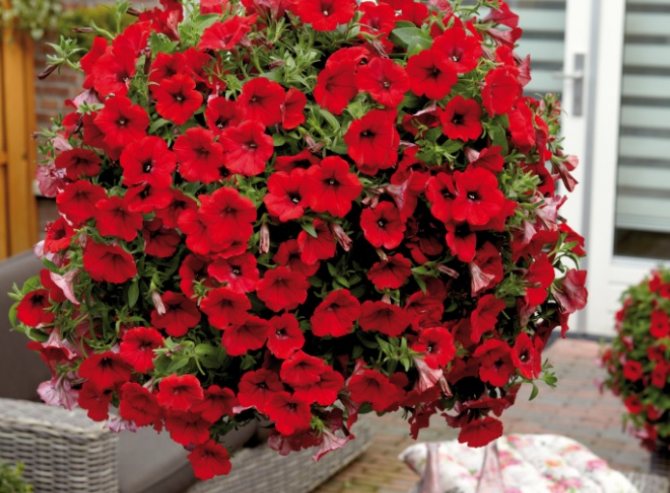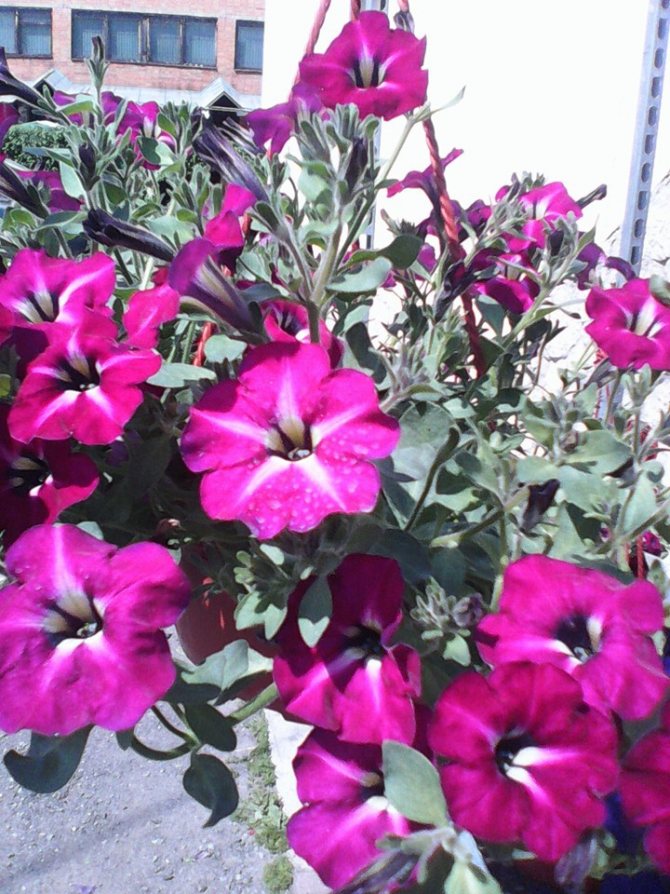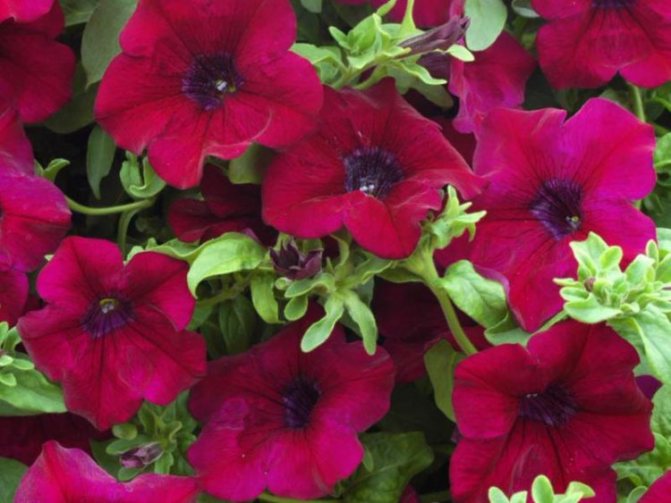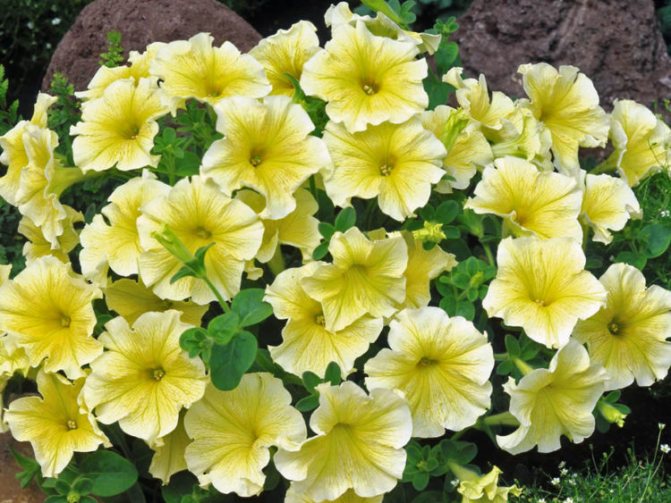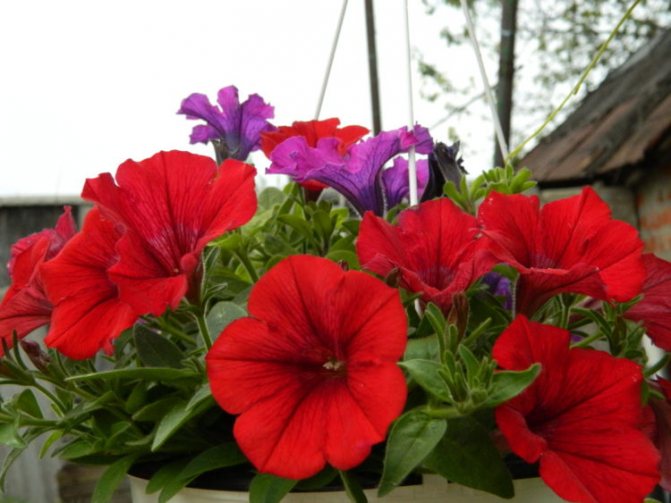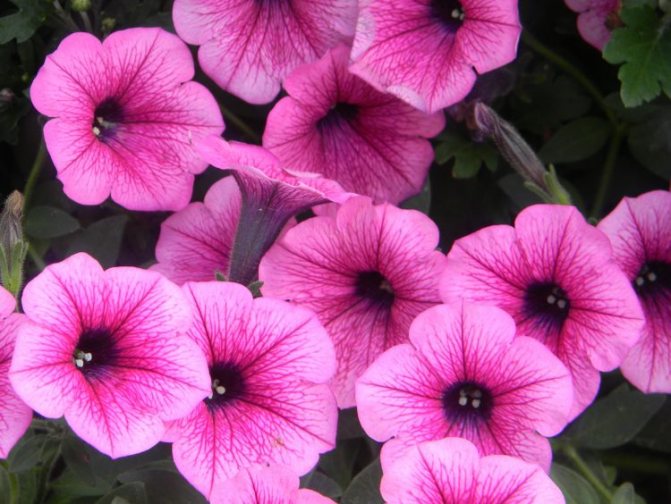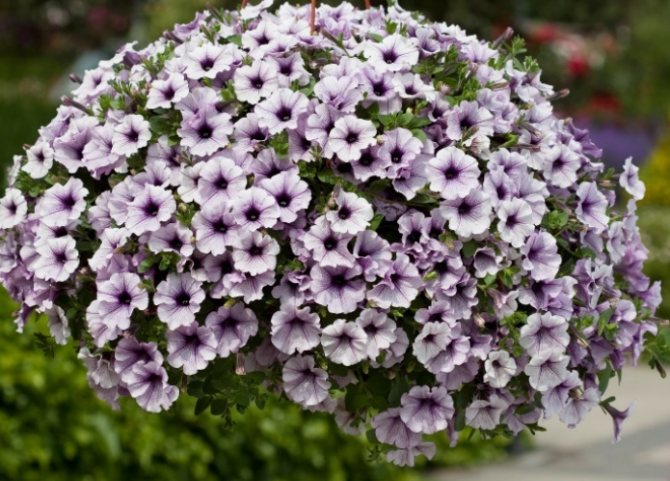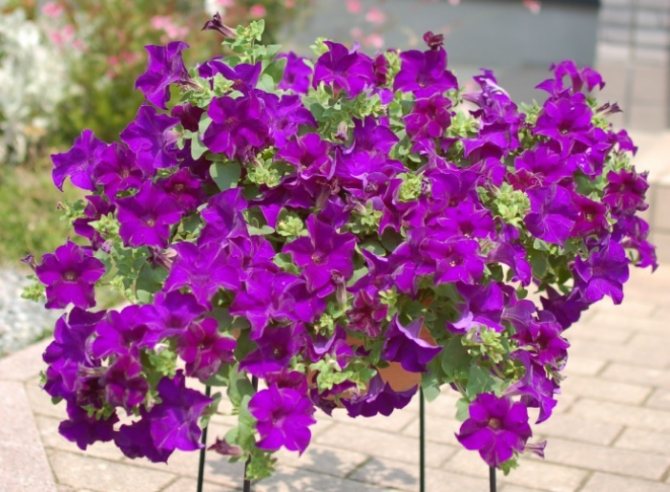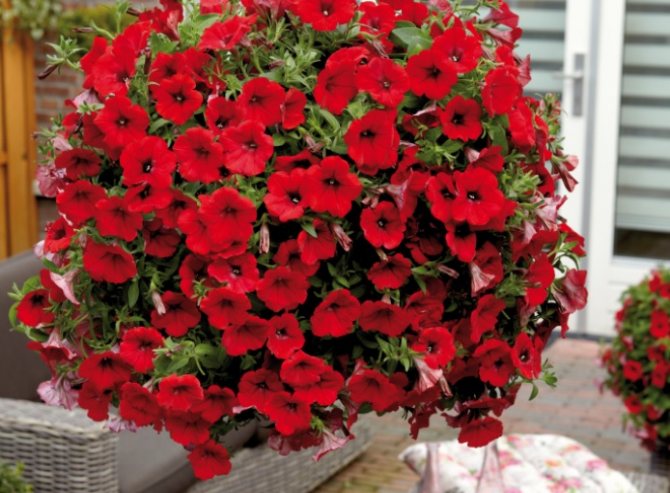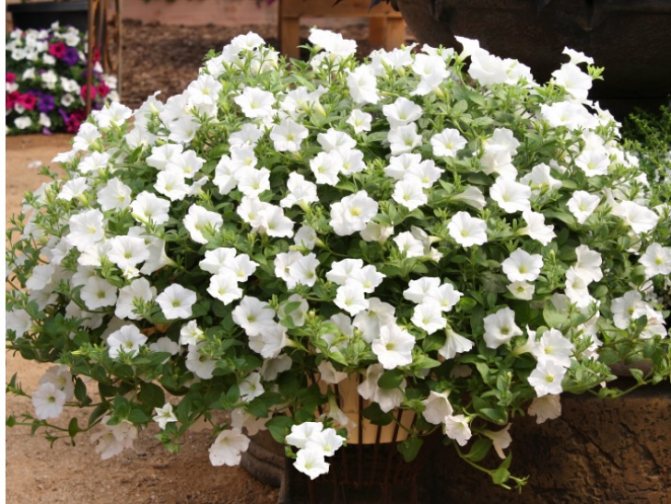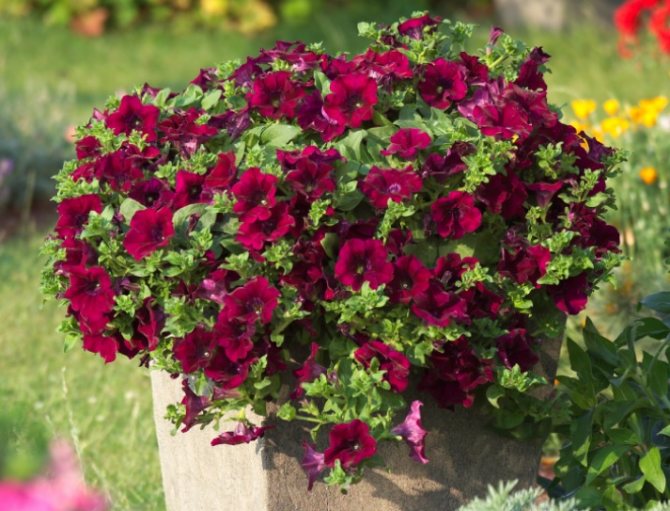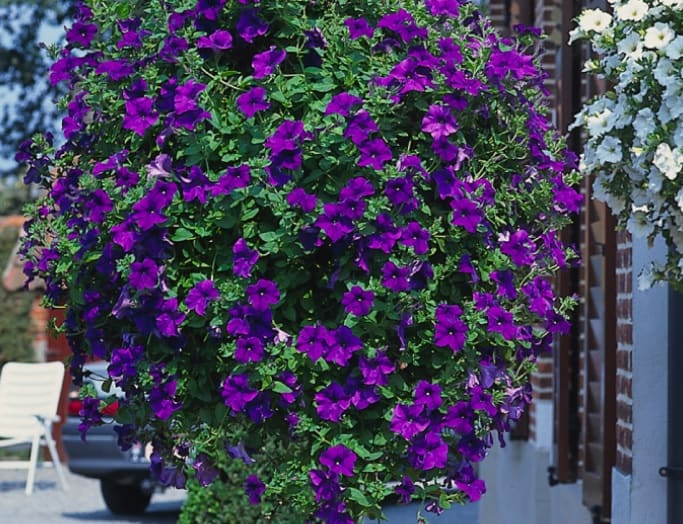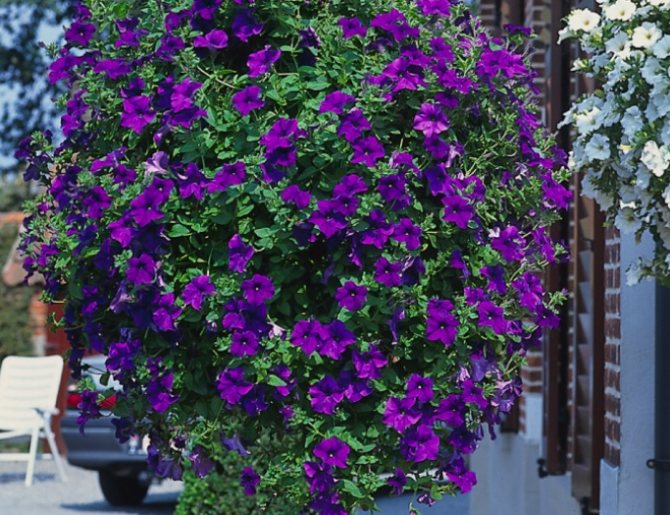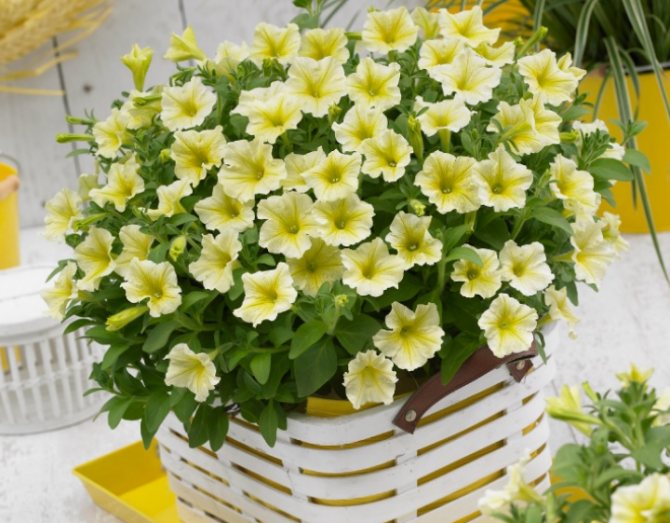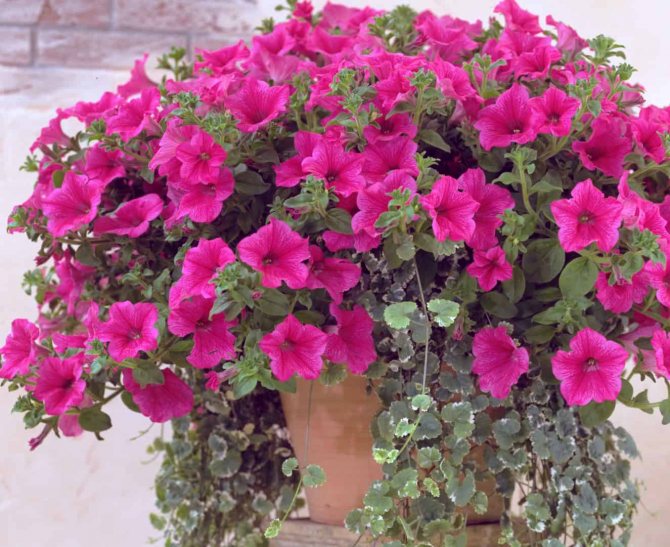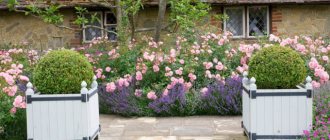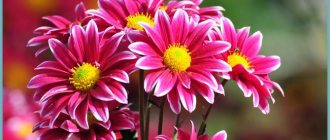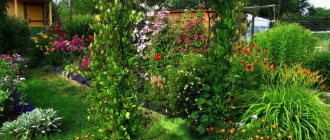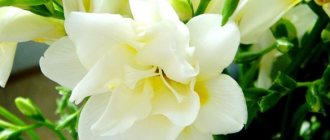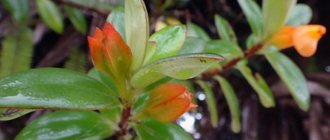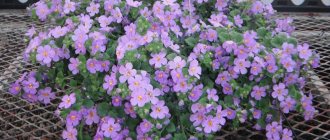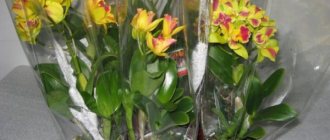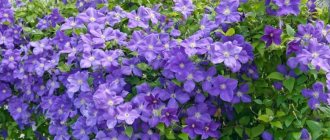Surfinia ampelous: care and cultivation at home
Every plant, garden or home, needs care. To admire the long and lush flowering of ampelous surfinia, you need to properly care for it. When growing a plant at home, you need to take into account its exotic features.

Large sulfinia flowers look like a vintage gramophone
Note! Since the overseas culture prefers a lot of light and warmth, one must carefully choose the place where to place the plant or hang the pots.
When grown at home, seedlings or cuttings are planted.
It is difficult even for experienced flower growers to grow surfiniya from seeds. The seeds are too small. Planting any plant begins with the selection of quality seeds.
The soil, garden or ready-made from the store, is calcined in the oven, disinfected. The land is needed loose, soft, fertilized.
Landing order:
- Several seeds are laid out superficially in a pot or box with moistened soil, and the container is covered with cellophane. If the seed is buried, then lightly sprinkle it with sand on top. With deep seeding, the seeds will not sprout.
- Sowing in rows, the distance between which is 5 cm, is very convenient. The row seeding scheme will provide the seedlings with ventilation.
- Surfinia seeds will sprout if the air temperature is at least 25 ° C.
- Sunlight should be soft, uniform, long-lasting (at least 12 hours).
- The soil is regularly sprayed, avoiding drying out and waterlogging. After 2 weeks, small sprouts will appear. It is difficult to grow seedlings from seedlings.
The film is not removed, creating greenhouse conditions. Further, they provide the seedlings with proper care. So that it does not stretch too much, the sprouts are taken to a room with an air temperature of 18-23 ° C.
After 1.5-2 months, when the seedlings grow up a little, they will become cramped and they will begin to shade each other, conduct a careful pick. With large volumes of growing seedlings, the plant is dived twice.
After each watering, light inter-row loosening is carried out. Moderate watering and loosening will help avoid diseases such as "black leg".
After picking, they are watered with a complex of mineral fertilizers, which contains a lot of phosphorus for the development of the root system and trace elements, for example, the Root.
Note! When planting a seedling, do not sprinkle the growth point (rosette) with earth, otherwise the seedling may die.
Compliance with the rule of soil moistening: watering only after the soil has dried will help to avoid root rot. After watering, water should not overflow from the drain holes. If it does, then the overflow of the plant was allowed. Surfinia will turn yellow from an excess of moisture in the soil.
Once every 2 weeks, seedlings are fed with minerals, for example, nitroammophos. Dilute 20 g of the product in a bucket (10 L) of water. In parallel with root dressings, leaf dressings are carried out with the same frequency. For this, for example, Brexil is used.
To grow healthy and strong seedlings, you need the following conditions:
- air temperature 23-25 ° С;
- adherence to cycles: watering, drying;
- diffused sunlight;
- light loosening;
- mineral dressings: root, leaf.
It will take 3.5 months from the day of sowing the seeds to get small flowering bushes.Having sown seeds at the end of January, by April you can get plants, which are then transplanted into pots, hanging baskets. Flowers are taken out on terraces, balconies, outside when it's warm.
Important! On the street, flowers are hung under a canopy, since extremely delicate foliage can suffer from strong winds or rain. Ampelnaya surfiniya is also planted in a flowerbed in the country.


Surfinia will grow, branch and descend in lashes
Hardening before planting in open ground
Plant hardening is the basis for the further growth of surfinia. In order for the seedlings to adapt to new conditions, they need to be prepared. To do this, young shoots are taken outside for several hours, leaving in a darkened place where there is no risk of direct sunlight falling on the leaves.
Since hardening is carried out at the end of May, there is no threat of daytime frosts, but precipitation is quite likely. A small amount of rainwater will not harm the seedlings, but it is important to monitor the moisture level and the strength of the rain, because weakened plants can break under the onslaught of a downpour.
Sulfinia ampelous: care and cultivation at home from cuttings
Indoor petunia - care and cultivation at home
The method of planting surfinia with cuttings, according to flower growers, is easier than growing from seeds. The procedure is as follows:
- Take the apical part 5-6 cm, cut off. Several lower leaves and peduncles are removed.
- The prepared cuttings are planted in cassettes filled with pure peat. First, the peat is moistened by immersing the cassettes in clean warm water, preventing water from flowing from above. The soil is moistened with water that flows through the drain holes from the bottom.
- Pencil depressions are made in the soil of the cassette cells. Each stalk is dipped in the preparation "Kornevin" (for 100% rooting of plants), lightly shaken off, lowered all the way into the hole, compacted.
- Cover with glass or foil, take it to the house. The room temperature should not fall below 22-23 ° C. Do not leave the cuttings in the sun.
Note! Day and night temperatures in the room should be the same, so the cuttings should not be left in a nursery, where it is cool at night and warm during the day.
After half a month, the cuttings will take root. They are transplanted into seedling glasses. Then it is poured with succinic acid (2 g per 10 l). The grown plants are then transplanted into pots, baskets, open ground.
Diseases and pests
Flowers grown from seeds, like plants grown from cuttings, are equally good at resisting diseases and pests when properly cared for. It will be useful to carry out preventive measures that will not only help protect flowers from pests, but also improve their quality.
The most common diseases that this plant can suffer from are white and gray rot. If treatment is not started in time, the flower will begin to rot and gradually die.
The causes of such diseases are low temperature drops, acidic soil and high humidity.
What is the difference between care during the flowering season as opposed to the dormant period
What is the difference between ampelous petunia and cascade
In order for sulfinia to bloom before frost, look smart, please with lush flowering, you need to show a little care. To do this, observe the following rules:
- In time, faded flowers are removed along with the flower bag close to the stem, since seeds begin to form in it, which take a lot of nutrition from the plant.
- The watering regime is strictly observed: the flower must not be overdried. Even a one-time overdrying will lead to loss of buds. While new inflorescences are forming, the plant will look unsightly.
- Gardeners feed surfinia with each watering (10 g of nitroammofoska per 10 liters of water).
- Examine plants for pests and diseases. If the leaves turn yellow, some spots appear, then the flower is sick. The most dangerous enemy of sulfinia is aphids.Black small midges, sticky foliage are the vital activity of the pest. The flower needs insecticidal treatment.
If you follow these simple gardening recommendations, the flowers will bloom magnificently.
Wintering and dormant period
During the season, the plant is depleted, weakened. The uterine flower is stored in cool rooms: underground, basement, equipped nurseries at a temperature of at least 6-7 ° C.
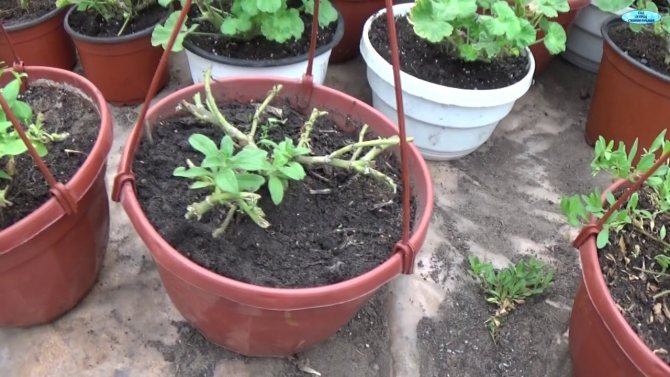

Preparing for winter
Before transferring to winter, the plant is cut off, wilted leaves and whips are removed. They are treated with Redomil Gold for diseases and pests with the addition of Teppike (insecticide).
During the dormant period, the plant "falls asleep". All life processes slow down: assimilation of nutrition, the work of roots. Water the plant occasionally (no more than 1 time per week) so that the roots do not dry out and die.
In nurseries in frosty conditions, the flowers are covered with spandbond, the room is heated. If there is no cool place, surfiniya can hibernate in a room at temperatures up to 20 ° C. The shoots will continue to grow, but slowly, they will be weak, thin.
Note! Any place where surfiniya winters should be lit, but not as much as during vegetative growth.
By spring, the flowers wake up: foliage grows, buds form. The plant can be cuttings.
Planting tips
As for the picking, it is carried out for those plants that already have two full leaves. At this stage, they must be transferred to larger pots and placed in such a way that neighboring young specimens do not disturb their growth. When growing seedlings in peat tablets, diving is not necessary, since each seedling is placed in a separate plate.


If the plant lets out 5-7 adult leaves, and the root system becomes strong enough, it can be moved to open ground, to a flower bed or hanging planter, to a balcony or terrace.
At the same time, the florist can realize his imagination and carry out combinations with different colors and shapes of the bushes, creating more saturated ensembles. Seedling seeds placed in the ground at the end of March - beginning of April... If planting is carried out in open soil, then it is important to make sure that the air temperature is consistently high and the soil warms up by 3-4 centimeters. As a rule, this happens in late May - early June.
During this period, seedlings are regularly fed. They start feeding after 3-4 weeks from the moment the first shoots are pecked, applying fertilizers to the ground along with water.
Complex compositions for flowers with a weak concentration are used. As the culture develops, concentration is increased.
How surfiniya differs from petunia
Columnea - care and cultivation at home
At first glance, the plants are similar in appearance: in leaves, flowers. The difference is small, and an inexperienced grower may not distinguish between petunia and ampelous surfinia.
Among the varieties of petunias and sulfinia, there are luxurious ones with double flowers. A double flower requires more nutrition, so the flowering is not so abundant. In addition, double flowers do not recover well after strong wind or rain.
In petunias, lateral shoots are formed, and flower buds are formed at the end of the main stem. In ampel petunias, the stems grow up to 50-80 cm. They are constantly pinched so that new lashes form in the axils of the leaves all the time. Then the plant will be lush.
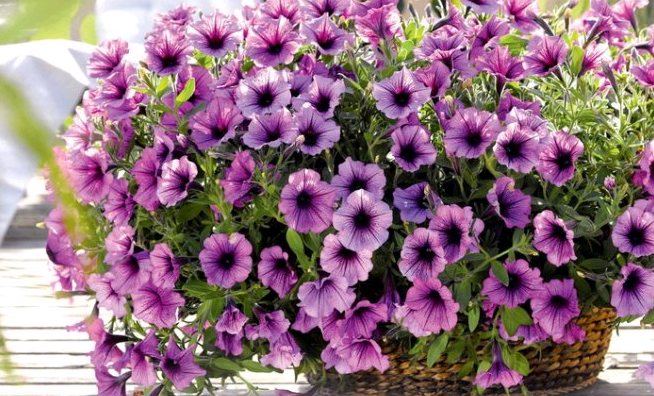

Surfinia looks chic thanks to vibrant colors
In sulfinia, new shoots with buds are formed in the leaf axils. There is no need to pinch the plant.
For your information! Surfinia lashes are more flexible, elastic than those of petunias, they grow up to 1.5 meters.
General information about the plant


Surfinia is an annual herb that belongs to the petunia family. In length, the stems of the plant can grow up to 2 meters.
Flowers form 2 to 7 cm in diameter, depending on the variety.
Their shape is funnel-shaped with clearly defined segments, the color of the petals also depends on the variety and can be monochromatic or multi-colored. Also, flowers are simple and double. Leaves and stems are colored light green and covered with villi. Leaves are small, oblong-oval in shape with a pronounced central vein, not densely located on the stems.
Surfinia - a hybrid of Japanese breeding petunias
The plant was bred by Japanese breeders at the end of the last century. The luxurious petunia with large, bright flowers could not be grown in bad weather. The Japanese wanted to adapt petunia to growing in difficult climatic conditions. As a result, breeders managed to breed an ampelous plant - a kind of petunia. The new culture did not propagate by seeds (did not give them), only by cuttings.
Ampelous sulfinia with luxurious flowers of different shades - white with a dark eye, pink, blue, purple - has won the recognition of all flower growers in the world.
Having mastered the skills of growing this plant and learning how to properly care for it, you can get a wonderful decoration for your garden or apartment.
Application


Surfinia is mainly used to decorate terraces, balconies, gazebos and houses. She is planted in hanging pots and decorate the territory. Blooming waterfalls can often be found in the old cities of Europe. Bright surfiniya flowers can also be seen in the decorations of outdoor cafes and restaurant areas.
More information can be found in the video.
When decorating balconies and creating decorative compositions near a room, colorful surfini is often used. The flowers planted in hanging pots are distinguished by flowing clusters, which give them an additional elegant look. Taking care of the plant is not difficult at all, and good growth rates are present in almost all regions with relatively warm climates.
Breeding features
Surfinia propagates vegetatively and by seeds. But only the second option is difficult, since as a result a small bush grows with insignificant flowering. The climate of Russia is poorly suited for these heat-loving flowers. Growing seedlings from seeds is a laborious process, and the result is not guaranteed. After planting, sprouts appear after 7 days. As soon as 2 leaves are formed, transplant the plants into separate containers.
For ordinary amateur flower growers an excellent breeding method is cuttings:
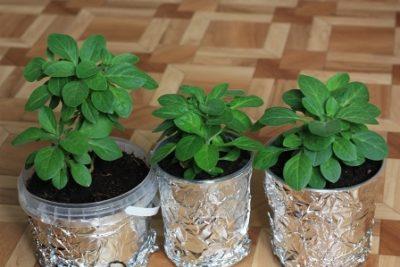

It is necessary to cut off the stalk from the bush and plant it in the potting mix. Moreover, this must be done as quickly as possible so that the stalk takes root.- Cover the plant with foil and set in a dark place.
- Watering will be required during the care process.
- As soon as an escape is formed, remove the film.
- You have to make sure that he is always warm.
- With the onset of spring, it can be planted, and in the summer it will turn into a large and brightly blooming bush.



